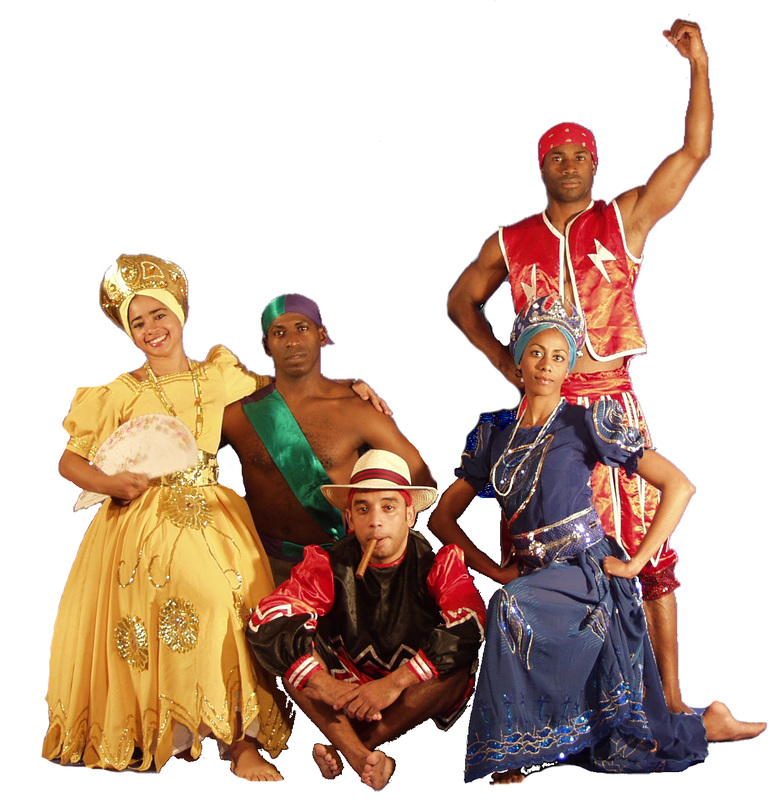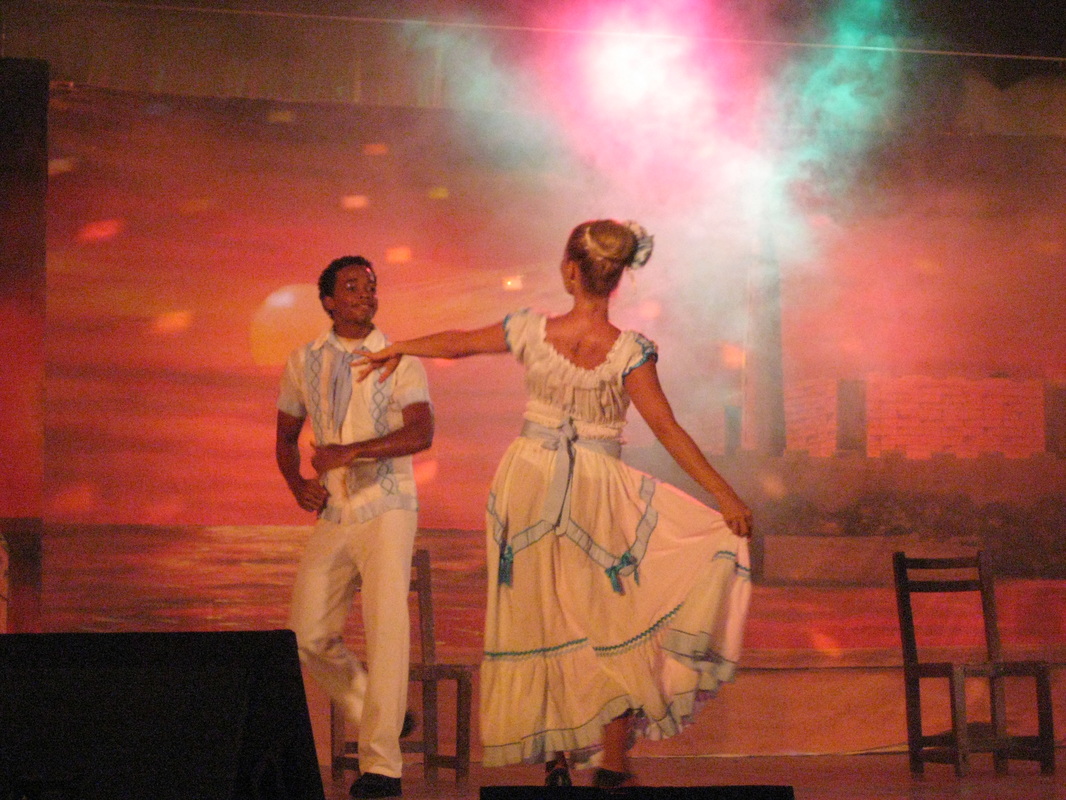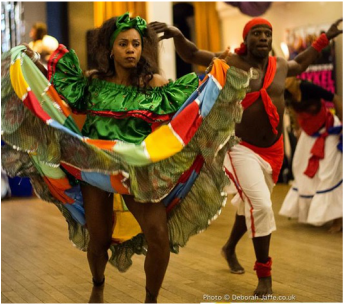|
Traditional and Popular DancesTraditional and popular Cuban dances or ‘Bailes/Danzas de Salón’ are mostly linked to traditional celebrations. Some of these have now disappeared. At first, they were only danced by the upper and middle classes in Cuban society, but later left the dance halls and reached the larger population.
Cuban traditional dances are very important for our cultural identity. As with other expressions in traditional culture, they acquired a collective nature when created, by assimilating and transmitting a way of satisfying expressive interests with various social meanings. |
WHAT IS SON CUBANO ?
Son cubano is a genre of music and dance that originated in the highlands of eastern Cubaduring the late 19th century. It is a syncretic genre that amalgamates elements of Spanish and African origin. Among its fundamental Hispanic components are the vocal style, lyrical metre and the primacy of the tres, derived from the Spanish guitar. On the other hand, its characteristic clave rhythm, call and response structure and percussion section (bongo, maracas, etc.) are all rooted in traditions of Bantu origin.[1] Around 1917 when the Danzon was the most popular national dance in Cuba, a new musical style known as the Cuban Son appeared in Havana. The Son was accepted with such enthusiasm that soon it became very popular without taking anything away from the Danzon. The Danzon, which had been the national dance of Cuba since 1879, could be found everywhere from the popular dance halls to upper class social clubs. The Son had the same elements as the Danzon but was different in its form. It is due to the Son that the African instruments came to light to animate the orchestras that were prevalent and typical at the time in Havana. These instruments exposed the deep currents of African rhythms in Cuba brought over by the slaves on their painful journey from Africa. Although the Son was accompanied only by percussion it also had its own distinct music and sound. However, in the Son, it is the rhythm that is most prominent. The Son originated in the Eastern region of Cuba, known as the Oriente Provence, among the country folk. This was probably due to the influence of the freed African slaves that arrived shortly after their emancipation from the French in Hispañola (now Haiti and the Dominican Republic.) It was around this time that several other instruments also appeared. The bongos (which are pressed between the knees and struck with one or more fingers), the marimbula, the quijada, the timbales criollos, the cowbell (which is played using a small metal bar), the botijuela (a wide earthen jar which is played by applying ones lips and blowing air through the thin opening at its neck) and the diente de arado (which sounds like a deep cowbell), were all introduced into popular Cuban music through the Son. Cubans also discovered the musical potential of a type of hardwood used for building boats, and from this the claves were born. The claves are a pair of cylindrical wooden sticks which when struck together produce a metallic sound that rises above all other instruments. The claves are the key to keeping the rhythm of the Cuban Son, and they also direct the dancers footsteps. In addition there are the palmadas (hand claps) as well as the guiros, the maracas, the guitar and its derivative, a Cuban innovation known as the tres. This is the battery of rhythmic instruments that have accompanied the Son since it came into being in 1920 and lasted until 1930. In Havana, the trumpet was also added to the Son. The botijuela was replaced by the double bass, and the claves kept the rhythm with the bongo drums. Various foreign composers that visited Cuba and heard the typical way of playing the Son were impressed with its rhythm. One of them, the American composer George Gershwin, incorporated the Son written by Ignacio Piñero entitled "Echale Salsita" as the principal theme for his work Opertura Cubana. The Sons which were maintained in their purest form came from the Oriente Provence. These Sons were mainly influenced by French blacks who came from Santo Domingo. The composers from Havana sometimes produced Sons closer in form to the Canción. The form of the Son is not complicated. It consists of the repetition of a chorus (el estibio) of four bars that since the beginning have been known as the Montuno, a chorus sung in response to a soloist. In its purest form it consists of the "largo" and the "montuno." The largo is initially recited in a single voice and is followed by the call and response of the percussion and voices in the "montuno". There is evidence that suggests that the Son was born at the end of the nineteenth century in the mountains of the Oriente Provence and acquired its distinctive musical personality in Havana in the 1920s. Some musicologists attribute the Son’s arrival in Havana to members of the Cuban army from the Oriente Provencethat were transferred to Havana and the Matanza Provence. It should be noted that this popularity was defined by the formation and success of the SextetoHabanero, the many prizes they received, their trips abroad, their recordings, their famous Sons and their participation in many popular films. Although it appeared between 1917 and 1920, this form of call and response already existed in the Son, "Ma Teodora" which was composed by the elder of the Gines sisters, Teodora. It is almost certain that is the first Son ever to have been written down, although the notable musicologist Eduardo Sanchez de Fuentes has stated that it has a decided aboriginal influence based on the form of the Areito found by Christopher Columbus in Cuba and danced by the native peoples. It should be noted that this Son was composed by Teodora Gines on her "bandola" in the region of Baracoa which coincides with the fact that the Son as we know it was born in Baracoa Oriente. The musical movement of the Son was so creative and convincing that it was capable of producing its own instruments, interpreters, authors and even its own original choreography. |
|
Become the best dancer you can be
Cuban dance and music styles are many and varied and the result of a long process of contributions by various ethnic groups, such as Iberian, West African, and later Chinese and the Caribbean.
Throughout history dancing has been rooted in spiritual expression. Since ancient times, body expression has maintained a close link with life and the fulfillment of important social functions, such as communication or interpreting the forces of Nature.
Dance elements of Hispanic tradition and others from various African ethnic groups began to arrive in Cuba in the 16th century.
All dance expressions brought by the various ethnic groups underwent a process of adaptation to the new social, economic, political and territorial conditions. Expressions such as the Zapateo, with its variants, and those derived from the Contredanse entered commonly accepted culture in Cuba.
Sub-Saharan ethnic groups preserved their religious dances dedicated to their gods, later syncretized with those of Catholicism, and generating dances that were mainly for enjoyment. Towards the end of the 19th century, Rumba and Son emerged and extended throughout the country with many local characteristics. These dance forms are very much alive today.
Cuban traditional dances are very important for our cultural identity. As with other expressions in traditional culture, they acquired a collective nature when created, by assimilating and transmitting a way of satisfying expressive interests with various social meanings.
Popular Dances: Rumba, Cuban Reggaeton, Pilon, Mozambique, Congas y Comparsas
Traditional Dances / Bailes de Salon: Danzon, Son, Mambo, Cha Cha Cha
Afro-Cuban Dances: Santeria or Orishas, Arara, Palo
Franco-Hatian Dances : Gaga, Vodou, Tumba Francesa,
Throughout history dancing has been rooted in spiritual expression. Since ancient times, body expression has maintained a close link with life and the fulfillment of important social functions, such as communication or interpreting the forces of Nature.
Dance elements of Hispanic tradition and others from various African ethnic groups began to arrive in Cuba in the 16th century.
All dance expressions brought by the various ethnic groups underwent a process of adaptation to the new social, economic, political and territorial conditions. Expressions such as the Zapateo, with its variants, and those derived from the Contredanse entered commonly accepted culture in Cuba.
Sub-Saharan ethnic groups preserved their religious dances dedicated to their gods, later syncretized with those of Catholicism, and generating dances that were mainly for enjoyment. Towards the end of the 19th century, Rumba and Son emerged and extended throughout the country with many local characteristics. These dance forms are very much alive today.
Cuban traditional dances are very important for our cultural identity. As with other expressions in traditional culture, they acquired a collective nature when created, by assimilating and transmitting a way of satisfying expressive interests with various social meanings.
Popular Dances: Rumba, Cuban Reggaeton, Pilon, Mozambique, Congas y Comparsas
Traditional Dances / Bailes de Salon: Danzon, Son, Mambo, Cha Cha Cha
Afro-Cuban Dances: Santeria or Orishas, Arara, Palo
Franco-Hatian Dances : Gaga, Vodou, Tumba Francesa,



